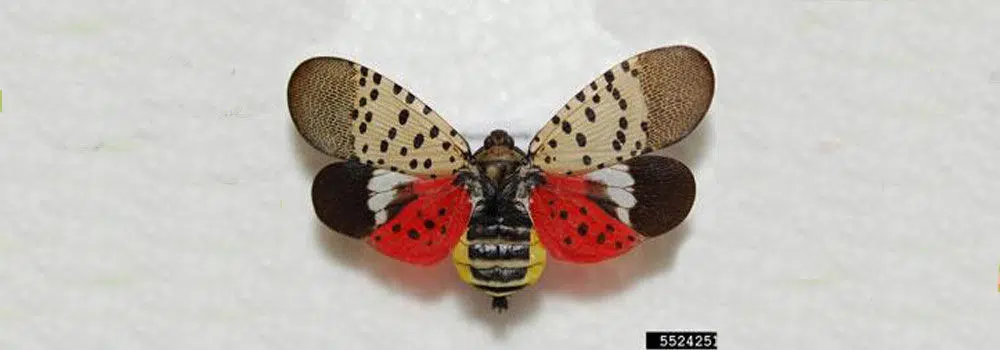By Kate Reynolds
The Illinois Department of Agriculture (IDOA) has confirmed the first detection and identification of the invasive spotted lanternfly (SLF) in Illinois for the first time in a decade. On Sept. 16, the department received a report of a live adult sighting. Specimens were collected for testing on Sept. 18. On Sept. 26, the sighting was confirmed and identified. Recent SLF sightings have occurred in Indiana, Michigan, and Ohio.
The SLF, native to eastern Asia, was first seen in southeastern Pennsylvania in 2014. Since then, it has had sightings throughout the eastern and southeastern U.S. Recent SLF sightings have occurred in Indiana, Michigan, and Ohio.
While the insect doesn’t pose a health threat to animals or humans, the SLF feasts on various plants, with a solid fondness for the invasive tree of heaven, wild or cultivated grapes, and maple trees. While feeding, SLF produces honeydew, a sticky liquid that often accumulates and coats the foliage and other plant parts.
“If there is a silver lining associated with spotted lantern fly in Illinois, it is that we have no reason to believe that widespread plant or tree death will result from its presence,” said Scott Schirmer, Illinois Department of Agriculture’s Nursery and Northern Field Office Section Manager. “This is likely going to be a nuisance pest that interferes with our ability to enjoy outdoor spaces and may have some impact on the agritourism industry, including orchards, pumpkin patches, and vineyards.”
“Spotted lanternfly has been inching closer to the Midwest and Illinois for close to a decade,” said Jerry Costello II, Illinois Department of Agriculture Director. “We have had a multi-agency team working to prepare for this scenario – including efforts on readiness, informing and educating the industry and the public, as well as monitoring early detection.”
The SLF moves freely on wood surfaces, vehicles, and more. Prevention and early detection are critical to limiting its ability to move and invade new areas. The IDOA encourages people to take photos and report any SLF sightings to lanternfly@illinois.edu. Pictures are necessary to verify a sighting and help with identification.
“(The) IDOA is working with federal and local partners in an effort to determine the full extent of the infestation,” said Dr. Michael Woods, Division Manager of Natural Resources. “Although we cannot determine with any degree of certainty how SLF has arrived here, efforts are being undertaken to better understand its movement and behavior.”
